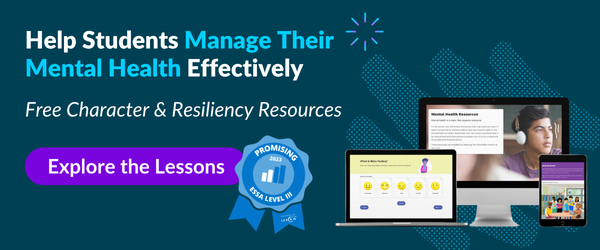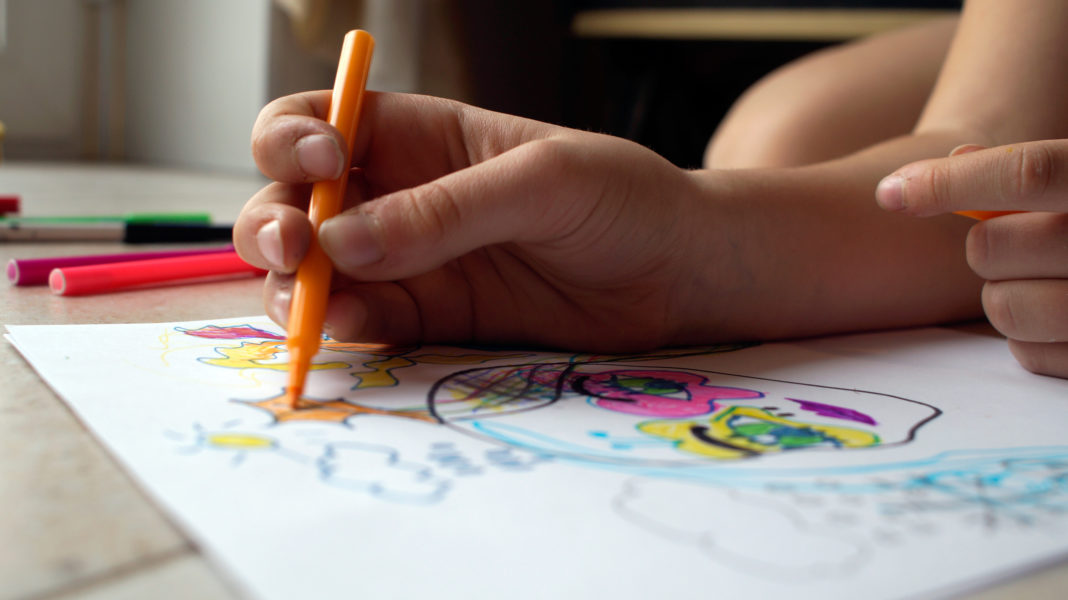Many are familiar with the saying, “kids can be cruel,” but we can set our classroom culture up for students to lead with compassion instead. Introduce your elementary school students to social-emotional learning concepts (SEL) with these eight examples of compassion activities for kids.
Activity 1: What Would You Say?
Skill-building for: Empathy, Writing
Activity 2: Acting with Compassion
The Compassion Project emphasizes key social-emotional learning (SEL) and mental health and wellness skills through 6 digital lessons and 18 offline lesson plans. Lesson 1: Defining Compassion provides scenario cards that students perform in front of the class or in small groups. This activity helps students visualize how to use compassion in their everyday lives like at lunchtime or recess. After each role play, bring your class together to discuss the questions listed in the ‘Activity Part 2’ section of the lesson.
Skill-building for: Empathy, Listening, Public Speaking
Activity 3: Rose, Thorn, Bud
At the beginning of class or end of class, allow two to three students the opportunity to share how they’re doing or anything interesting that is happening in their lives. Ask them what the highlight of their day was (the Rose), what went wrong during their day (the Thorn), and what they are looking forward to (the Bud). Especially helpful at the beginning of the school year, this activity allows students to connect with classmates without the pressure of talking directly to someone they may not be totally familiar with yet. They can also practice compassion as they react and respond to any successes or struggles their classmates are facing.
Skill-building for: Relationship Building, Empathy
Activity 4: Compassion Round-Robin
Round-Robin storytelling is an excellent way for your students to engage in storytelling and utilize their creativity. Divide your class into small groups and have each group tell a short story that involves an act of compassion. Have one student in each group start the story by saying “Once upon a time, there was a….”. The next student in the group will add to the story, and so on and so forth until the story is complete. One student in each group should write down each part of the story so they can share it with the rest of the class. For example, the Round-Robin story could sound like: “Once upon a time, there was a boy riding his bike. The boy saw an old lady accidentally drop her keys. The old lady looked like she needed help picking up the keys. So, the boy went over to her and picked them up for her.”
Student 1: Once upon a time, there was a boy riding his bike.
Student 2: The boy saw an old lady accidentally drop her keys.
Student 3: The old lady looked like she needed help picking up the keys.
Student 4: So, the boy went over to her and picked them up for her.
It may take some practice, but once your students get the hang of it, their stories will articulate their full depth of understanding of compassion!
Skill-building for: Creativity, Communication, Writing

Activity 5: Pantomime
Lesson 4: Our Emotions from The Compassion Project offers an activity to help students understand the connection between emotions and compassion. For this compassion activity, give a student an emotion card (provided in Lesson 4) and ask the student to act out the emotion written on the card without talking or making a sound. Have the rest of your class guess which emotion is being acted out and explain their guesses. This activity helps students realize that they can understand how someone else is feeling without them having to say it.
Skill-building for: Empathy
Activity 6: Compassionate Casey
After learning what it means to be compassionate, your students can now provide examples of compassion in action. Have students draw a stick figure on a piece of paper dubbed Compassionate Casey, who represents an incredibly compassionate person. They can add color and details with crayons or markers to their drawings. Have your students write three things Compassionate Casey likes to do that would make him or her compassionate. Then have a few students share their ideas with the rest of the class or in pairs.
Skill-building for: Critical Thinking, Empathy
Activity 7: Compassion Cards
Let your students think about how they can show compassion to people in their own lives. Have them write the names of four to five people (or even a pet!) in their lives on separate index cards. Then on the back of each card, they should write something they would do to show compassion toward each person or pet. Allow a few students to share who they chose to put on their index cards and what they would do to show compassion. Challenge everyone to fulfill at least one of their cards as a Compassion of the Week activity.
Skill-building for: Empathy, Writing

Activity 8: Caught with Compassion
To encourage your students to show compassion to their classmates, designate a day or multiple days when you can “catch” your students showing compassion to their peers. Track how many times you caught each student showing compassion with a chart, and reward them based on how many times they demonstrated compassion that day.
Skill-building for: Empathy, Relationship Building
Compassion Activities FAQs
How Do Compassion Activities Help in the Classroom?
Compassion activities in the classroom promote emotional safety, reduce negative behaviors, and improve academic performance and social skills. They help students develop life skills such as empathy and conflict resolution, and also benefit their mental health and overall well-being.
By incorporating compassion activities, teachers can create a positive and supportive learning environment for their students.
How Do Teachers Get Started With EVERFI’s Free Compassion Lessons?
Gain immediate access to EVERFI’s free digital and offline Compassion Project activities by creating an account.
Creating your teacher account takes less than five minutes. Getting your classes registered and ready to learn takes less than ten minutes.
That means if you need a something fun to do that’s aligned with your standard but don’t have a lot of time to plan, you can have your students learning in under fifteen minutes!
How Can Administrators Bring EVERFI’s Free Compassion Lessons To Their Schools?
Simply schedule a call with EVERFI to bring The Compassion Project and other character education resources to your schools!
EVERFI’s suite of life skills resources is 100% free to teachers & districts! We’ll even align the resources to your curriculum maps and train your teachers!
!["[EVERFI] has been a game changer for us, and our main intervention for student infractions." -District Administrator - Irvine Unified School District, CA](https://everfi.com/wp-content/uploads/2025/08/Quote_Prevention_Game-Changer.png)


